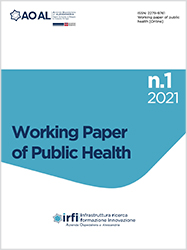Monitoraggio delle complicanze da tossicità nei pazienti sottoposti a CAR-T: studio osservazionale, prospettico

All claims expressed in this article are solely those of the authors and do not necessarily represent those of their affiliated organizations, or those of the publisher, the editors and the reviewers. Any product that may be evaluated in this article or claim that may be made by its manufacturer is not guaranteed or endorsed by the publisher.
Autori
Background: L’ambito delle terapie con CAR-T è un campo ancora nuovo e la gestione delle tossicità è nella sua fase iniziale; è necessaria, dunque, una ricerca mirata che affronti le questioni critiche relative agli outcomes dei pazienti. Scopo dello studio è quello di monitorare l’incidenza di complicanze da tossicità dovuta a CAR-T durante il periodo relativo al ricovero ospedaliero. Metodi: Studio osservazionale, prospettico, monocentrico. Il campione sarà composto da tutti i pazienti di età ≥18 anni candidati a trattamento con CAR-T da aprile 2022 ad aprile 2025. Al fine della raccolta dati verranno utilizzate le seguenti scale di valutazione: Numeric Rating Scale for Pain, Scheda Eventi Avversi, Immune Effector Cell-associated Encephalopathy Score, Grading WHO, EuroQol-5D-3L, Hospital Anxiety Scale, Scored Patient-Generated Subjective Global Assessment, Contentment with Life Assessment Scale. Conclusioni: L’immunoterapia e le CAR-T hanno mostrato risultati promettenti nel trattamento di alcune neoplasie maligne, ma possono essere associate a tossicità diverse e non completamente comprese che possono essere fatali se non identificate precocemente e trattate in modo appropriato. La comprensione delle complicanze potrebbero migliorare gli outcomes dei pazienti.
Agenzie di supporto
NessunaCome citare

Questo volume è pubblicato con la licenza Creative Commons Attribuzione - Non commerciale 4.0 Internazionale.






